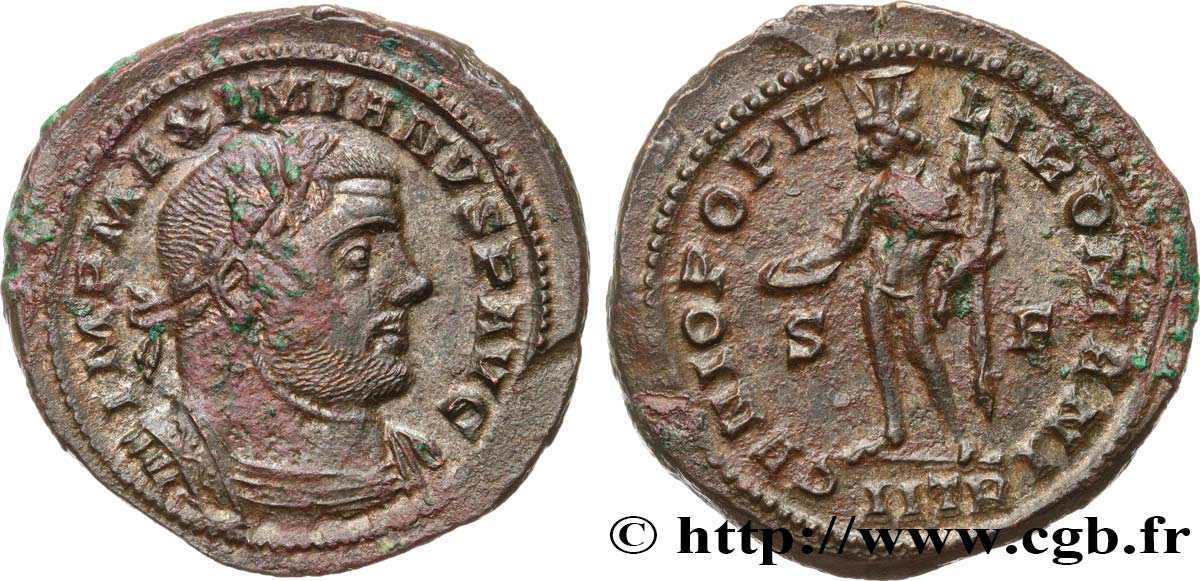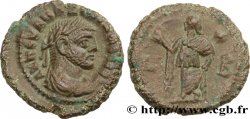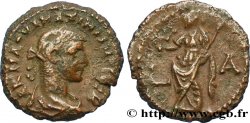brm_626666 - MAXIMIANUS HERCULIUS Follis ou nummus
Not available.
Item sold on our e-shop (2023)
Price : 150.00 €
Item sold on our e-shop (2023)
Price : 150.00 €
Type : Follis ou nummus
Date: 302-303
Mint name / Town : Trèves
Metal : copper
Millesimal fineness : 30 ‰
Diameter : 30 mm
Orientation dies : 11 h.
Weight : 13,85 g.
Rarity : R3
Officine: 2e
Coments on the condition:
Flan large, épais, centré des deux côtés. Joli revers. Patine grise, tachée
Catalogue references :
Obverse
Obverse legend : IMP MAXIMIANVS P AVG.
Obverse description : Buste lauré et cuirassé de Maximien Hercule à droite drapé sur l’épaule, vu de trois quarts en avant (B*01).
Obverse translation : “Imperator Maximianus Pius Felix Augustus”, (L’empereur Maximien pieux heureux auguste).
Reverse
Reverse legend : GENIO POPV-LI ROMANI/ S|F// IITR.
Reverse description : Genio (Génie) debout de face, coiffé du modius, le manteau sur l'épaule gauche, tenant une patère de la main droite et une corne d'abondance de la main gauche.
Reverse translation : “Genio Populi Romani”, (Au Génie du Peuple Romain).
Commentary
Poids lourd. Rubans de type 3. Cuirasse lisse. Épaulière cloutée. Ptéryges fines. Semble complètement inédit et non répertorié avec ce type de buste et le génie coiffé du modius. Le même portrait est référencé avec le génie tourelé (RIC. 524b). Au revers les lettres S|F pourraient être les initiales pour “Sæculi Felicitas”, (le siècle de la félicité).








 Report a mistake
Report a mistake Print the page
Print the page Share my selection
Share my selection Ask a question
Ask a question Consign / sell
Consign / sell
 Full data
Full data



